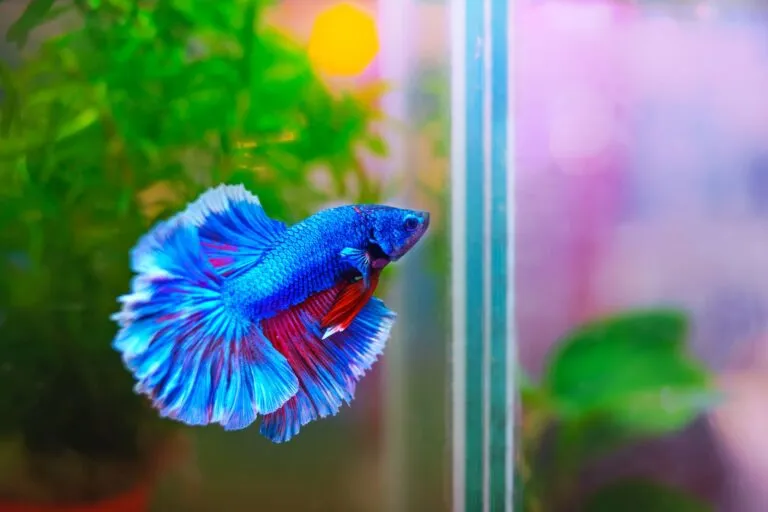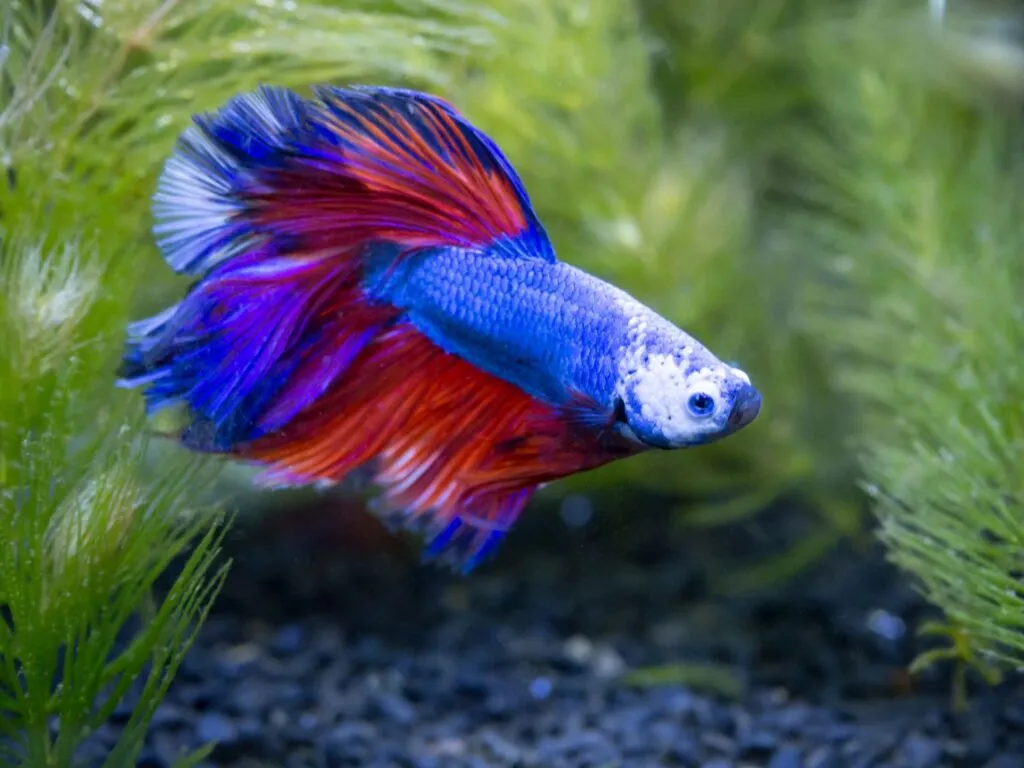Caring for a Siamese Fighting Fish is straightforward, making it suitable for beginners. Since this colourful fish is relatively small, you need not invest in a very large aquarium.
The aquarium and water should exhibit the following features:
- Size: 60 cm
- Volume: 54L (30L is sufficient for smaller nano Siamese Fighting Fish)
- pH Value: 5-8
- Temperature: 24-30°C
- Water Hardness: 10-25° dGH
What temperature do Siamese Fighting Fish need?
Due to its large fins, the Siamese Fighting Fish requires plenty of energy and space to move around in the water. The ideal temperature is between 24 and 30 degrees Celsius.
Temperatures below 20 degrees Celsius can cause discomfort to the fish; they will likely be less active. You can gently heat the water in a 30L aquarium with a 25-watt heater.
Siamese Fighting Fish do not appreciate fast-flowing water; they prefer still waters like in their natural habitat. Consider this when setting up your aquarium.
What plants are suitable for Siamese Fighting Fish?
Siamese Fighting Fish adore aquatic plants planted at the bottom of the tank. Generally, Asian plants are preferred over European aquarium plants.
They enjoy densely planted areas and smaller floating plants, although space should still be left on the water’s surface for bubble nests.
Although dense plant cover will make the tank appear darker, the fish feel comfortable in this atmosphere. Red-green and white-green marsh plants also provide optimal shade.
The right decoration
For decoration, you can use real stones and wood. You can choose these elements according to your preference, as long as you do not use bright or coloured stones. Whether gravel, rounded pebbles or sand – the choice is yours.
Are Siamese Fighting Fish loners?
While there are peaceful individuals, the Siamese Fighting Fish can sometimes be unfriendly. They can be very aggressive, which is why you should never house two males together. It is therefore advisable to keep male specimens alone.
What fish can be kept with a Siamese Fighting Fish?
With other fish species, it’s important that they are neither too large nor too small. Larger fish may see your Siamese Fighting Fish as prey, while smaller fish might become prey themselves.
Cichlids exhibit similar territorial behaviour, so they’re not great candidates for cohabitation. Guppies are a definite no-go. Danios are not suitable either, as their high activity levels can stress out your Siamese Fighting Fish.
The best tank-mates are catfish and fish of similar size with small fins.


